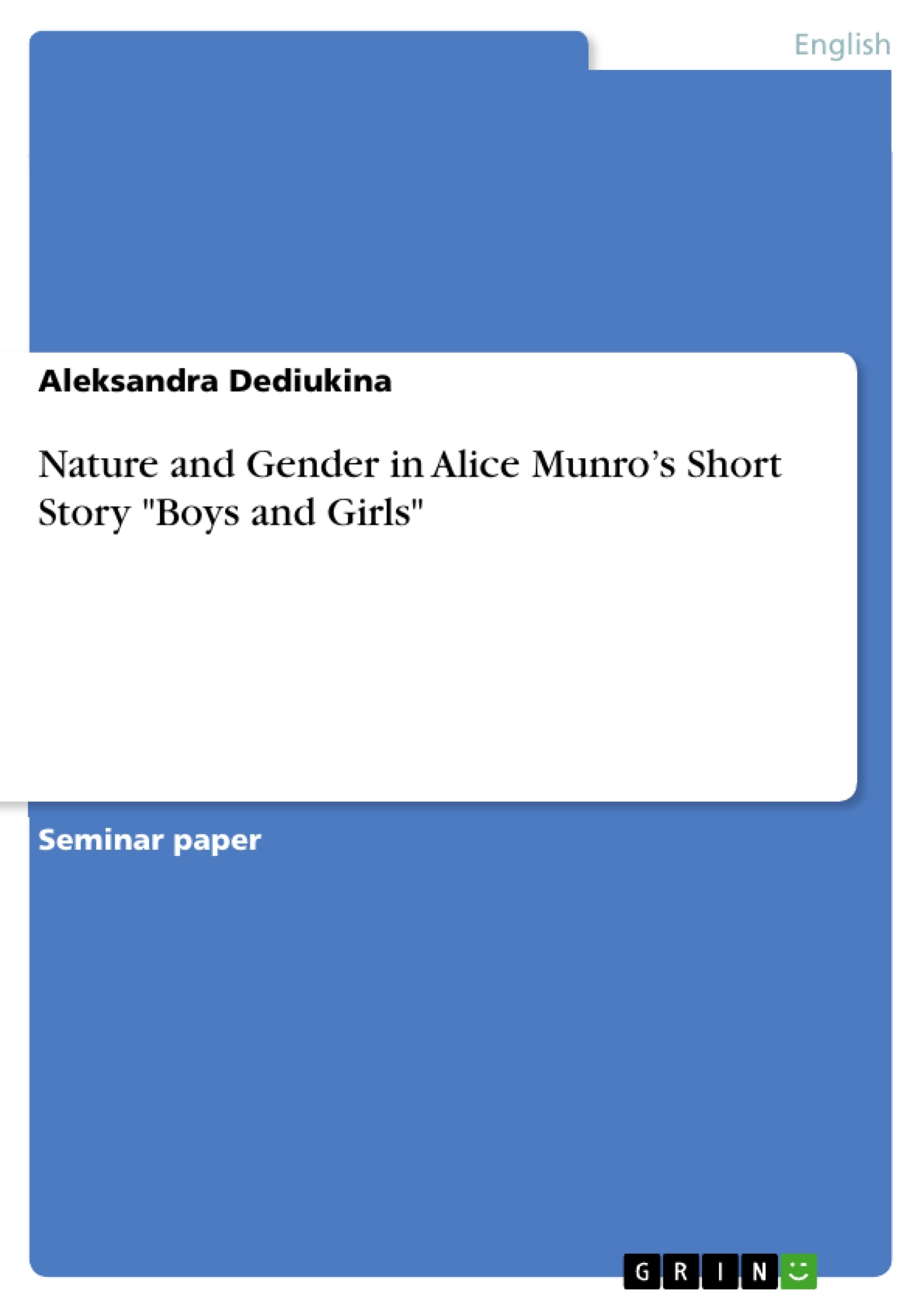This paper examines Alice Munro’s short story "Boys and Girls" through the lens of ecofeminism. The theoretical part provides the key principles of ecofeminism as a literary theory, and in the analysis part their realisation in the story is explored.
Ecofeminist literary criticism is a branch of literary criticism that, first of all, uses the principles of feminist literary criticism and ecocriticism — but is not restricted to them. Among other approaches with which ecofeminist literary criticism closely interact, there are “radical environmental philosophy, critical animal studies, and radical economic and political theories about globalization, economics, ecology and politics” (Gaard 2010).
Historically, ecofeminist literary criticism stems from ecofeminism as a movement with a two-decade history of activism and theoretical work. Ecofeminism, first of all, operates on the premise that in the male-dominated world both women and nature have long experienced discrimination. Hierarchical thinking in establishing relationships among humans brought about another form of inequality — towards nature. This defines the angle from which ecofeminist literary criticism approaches literary texts: the scholars seek to register two binary cross-connected oppositions ‘male/female’ and ‘nature/culture’ and expose a fallacious and dangerous character of this dualism.
Table of Contents
- Introduction
- Ecofeminism: Shared Story of Oppression
- ‘Boys and Girls’ through the Ecofeminist Lens
- Shared Seclusion: Pens, Fences, and the Kitchen Door
- The Male World
- The Narrator: the Story of Liberation
- Conclusion
- Bibliography
Objectives and Key Themes
This term paper aims to analyze Alice Munro's short story "Boys and Girls" (1964) through the lens of ecofeminism. By drawing on the key principles of ecofeminist literary criticism, the paper will explore the story's portrayal of the male-dominated world and its impact on women and animals. The analysis will focus on the story's setting, the male characters, and the protagonist's journey of liberation.
- The interconnectedness of gender and nature oppression within a male-dominated world.
- The portrayal of the male characters as representatives of a ‘master model’ that seeks to control women and animals.
- The protagonist's evolving self-awareness, her growing sympathy for animals, and her ultimate act of rebellion.
- The role of language and narrative tools in conveying the themes of oppression, power, and liberation.
- The significance of Alice Munro's feminist perspective and its intersection with ecofeminist concerns.
Chapter Summaries
The introduction provides a concise overview of ecofeminist literary criticism, highlighting its core principles and its application to the study of Alice Munro's short story. It outlines the paper's structure, outlining the focus of each chapter and the analysis to be undertaken.
Chapter two, "Ecofeminism: Shared Story of Oppression," delves deeper into the theoretical foundations of ecofeminism. It examines the work of prominent ecofeminist scholars such as Carolyn Merchant, Val Plumwood, Ynestra King, and Greta Gaard, extracting key concepts and principles that will be applied to the analysis of "Boys and Girls." This chapter provides a context for understanding the ecofeminist perspective that will guide the analysis of the short story.
Keywords
Ecofeminism, feminist literary criticism, ecocriticism, gender, nature, oppression, control, liberation, Alice Munro, "Boys and Girls," narrative tools, master model, protagonist, setting, male characters, animals, shared story.
- Quote paper
- Aleksandra Dediukina (Author), 2024, Nature and Gender in Alice Munro’s Short Story "Boys and Girls", Munich, GRIN Verlag, https://www.grin.com/document/1502956



